Anaerobic digestion pumps are an essential piece of equipment used in anaerobic digestion systems. These pumps help to move the waste materials and other liquids through the system and ensure that the anaerobic digestion process runs smoothly.
Proper maintenance and ownership of anaerobic digestion pumps are crucial for ensuring that the system works correctly and that the waste materials are processed as efficiently as possible. If a pump is down, and any backup pump is not functional, the ability of the whole plant to make biogas is in jeopardy. We think that this is so essential that it is not a “tip”. Users just have to maintain their equipment. This should be common knowledge but sadly it is often neglected.
In this article, we will discuss 6 tips for proper ownership and maintenance of anaerobic digestion pumps.
We will look at the importance of regular maintenance, the types of pumps available, and how to select the right pump for your needs. We will also discuss how to ensure proper operation and how to troubleshoot any problems that may arise.
By following the following anaerobic digestion plant operating tips, you can ensure that your anaerobic digestion system runs smoothly and efficiently. Biogas is a renewable energy source that is created through the process of anaerobic digestion. The mostly methane gas created through this process must be stored in tanks or digesters for later use.
Tip 1 – Take a Pressure Reading of your System when it is Set-up & Working
If you're not sure what to do when your anaerobic digestion plant pump starts making strange noises, or if your system's pressure is dropping, it's a good idea to take a pressure reading.
This will tell you how well the pump is creating the pressure the system needs to work as intended.
If the pressure reading is low, it might mean any one or more of a number of things has gone wrong. Or, it might simply indicate that the anaerobic digestion pump needs to be serviced.
If the pressure is high, it might mean that something is blocking the water at some point in the pipe system.
But, you won't know whether the system is either high in pressure or low unless you have recorded the normal, healthy, plant operating pressure in order to make a good comparison.
Therefore, remember this tip above all the others and make sure you record the pumping system characteristic pressures at commissioning handover!
Tip 2 – Pick an Anaerobic Digestion Pump that has an Easy Warranty Process
When choosing a pump, consider the warranty process.
Some pumps offer easy warranty processes, such as online registration or a toll-free number. This can save time and hassle if there are any issues with the pump.
Tip 3 – Only Buy High Construction Quality Anaerobic Digestion Pumps
There are three main aspects to the construction quality of anaerobic digestion pumps: materials, design, and manufacturing.
Materials:
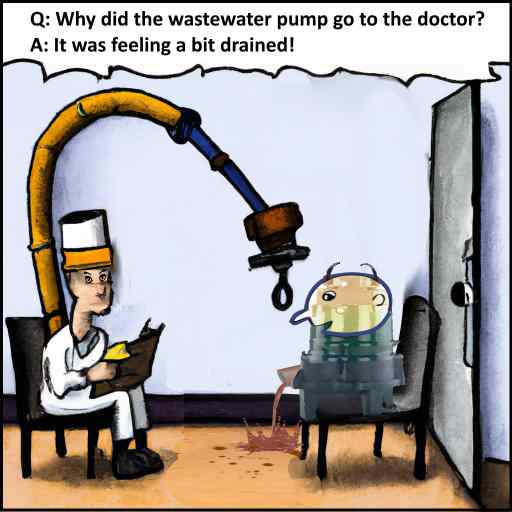 Anaerobic Digestion Pumps are available which are made from a variety of materials, including metal, plastic, and fibreglass.
Anaerobic Digestion Pumps are available which are made from a variety of materials, including metal, plastic, and fibreglass.
Metal pumps are the most popular due to their strength and durability. They are also the most expensive to purchase.
Plastic pumps are typically less expensive than metal pumps, but for most biogas plant applications, they are not as durable as metal or plastic pumps and as the anaerobic digestion process flow also includes abrasive and corrosive materials are not recommended.
Design:
Pumps must be designed to meet the specific requirements of your anaerobic digester, such as the type of organic waste pulp mixed with water being pumped, the pressure required, and the size of the pump.
Manufacturing:
Pumps must be manufactured in a quality-controlled environment to ensure they meet the required standards.
Tip 4 – Only Buy Professional-grade Pumps
If you are looking to buy an anaerobic digestion pump, make sure to only buy professional-grade pumps. These pumps are typically more reliable and last longer.
Don't be fooled by descriptions of low-cost pumps on mainstream seller websites.
Those national suppliers of multiple brands seldom offer any professional-grade anaerobic digestion pumps. Go to a recognised professional maker for all your biogas plant pumps. They tend to be more expensive, but they are worth the investment.
Tip 5 – Base Purchasing Decisions on the Cost Over the Lifetime of the Ownership
When making purchases, base your decision on the cost over the lifetime of the ownership.
This will help you to avoid making costly mistakes down the road.
For instance, if you are intending on purchasing a car that you will use for only a few months, most of us would look for a cheaper car that has low mileage on the clock.
Conversely, if you plan on running your anaerobic digestion plant for many years, invest in a better more up to date. and well-serviced pump model.
Tip 6 – Always Know How to Turn your Anaerobic Digestion Pump on Manually
Always know how to turn your pump on manually in case of a power outage. This will help to prevent the loss of water pressure in your home.
Summary and Conclusion
Summary: Anaerobic digestion pumps are important components of anaerobic digestion systems, used to transfer waste and other materials throughout the system. Proper maintenance of these pumps is essential for the long-term efficiency of the system.
This article provides six tips for owners and maintainers of anaerobic digestion pumps and is a good guide to successful AD plant operation. However, a reader suggested the following slightly different list:
- Monitor for signs of wear and tear;
- Use the right type of pump for the job;
- Pay attention to motor speed;
- Keep the pump clean;
- Use the appropriate lubricants; and
- Perform regular maintenance.
Read More (ADBA Press Release):
 Landia: The Company that Provides Anaerobic Digestion Pumps and Mixers of all Kinds
Landia: The Company that Provides Anaerobic Digestion Pumps and Mixers of all Kinds
The innovative Danish pump and mixer product developer, Landia, is notable for still being a family-owned company, probably uniquely for the manufacture of anaerobic digestion pumps. This is despite the fact that it was founded way back in 1933. Its claim to fame originates right back in 1950, when the company invented the first really workable electric pump for pumping difficult fluids, by being the first to incorporate the inclusion of rotating knives, within a pump.
From that day to the present, Landia has concentrated on the provision of products for the “dirty”, water pumping and mixing sector, by developing new products to serve each developing market as they evolve within the water and waste water, and farming sectors.
Unsurprisingly, although it may be, Landia's equipment also excels in the clean water sector, as well, but it is in the AD equipment market that Landia has identified a need for new products.
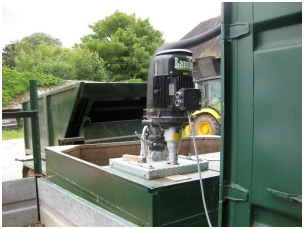 While interest was been growing worldwide in renewable energy from biomass through the Anaerobic digestion process over the last 5 years, Landia was quietly developing new products to meet the emerging demands for specialist pumping and mixing equipment, within this emerging industry.
While interest was been growing worldwide in renewable energy from biomass through the Anaerobic digestion process over the last 5 years, Landia was quietly developing new products to meet the emerging demands for specialist pumping and mixing equipment, within this emerging industry.
The product that they came up with, took the company right back to its roots, and drew on their long-standing skills to produce a new range of bladed pumps, which it has named its “Chopper Pumps Range”.
The Landia Chopper Pump, we understand, is in heavy demand despite the current economic downturn, and is increasingly used all over the world. It combines the functions of pumping with a very robust chopping action.
Designing anaerobic digestion pumps, suitable for pumping such materials is notoriously difficult. However, users have attested to the fact that this pump reliably provides long term blockage-free running, at a low running cost, and even when handling highly variable feedstocks on-farm and in the digestion of MSW wastes, and sewage works sludges.
The video below showers a Landia chopper pump configured in their Gasmix system, to provide a digester with mixing, and scum removal. The result is that these anaerobic digestion pumps provide an improved gas yield from enhanced digestion rates.
Landia Anaerobic Digestion Pumps Have Global Reach and Wide Application
Landia competes successfully internationally, with over 75% of Landia’s business being exported.
Landia pumps, mixers and process units are also in successful use across numerous other industries in facilities which include sewage treatment plants, anaerobic digestion and biogas plants, agricultural biogas digesters, and fish processing factories, plus having interests in the food and brewing sectors.
Right across the waste management and biogas industry Landia shows its experience and skills as specialist designer/manufacturer.
In fact, the company prides itself on high-quality products and providing a backup service to its customers which they think, with a good measure of justification, is second to none in its industry niche.
Visit Landia’s website for more information on the Chopper Pump.
Verder Anaerobic Digestion Pumps Used in the Recovery of waste food and the production of biogas
A famous Norfolk brewery producing excellent quality genuine ales has introduced a biogas digestion process producing high-quality biomethane that can be delivered to natural gas users through the national gas grid.
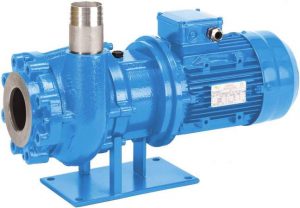 Food waste is collected at the side of the dock and processed into waste from supermarkets and breweries. The organic material is inserted in a feed-inlet when the rotor chopper breaks down the raw material in the process.
Food waste is collected at the side of the dock and processed into waste from supermarkets and breweries. The organic material is inserted in a feed-inlet when the rotor chopper breaks down the raw material in the process.
Not only does the AD process provide benefits from waste reduction but a side effect can be the production of carbon dioxide at the same time as they produce biogas.
A Verderflex Pump moves crushed slurry out of holding tanks into heated exchangers to raise the temperature before entering the main Anaerobic Digestion facilities.
Progressive Cavity Pumps are Used in Anaerobic Digester Applications
Biogas plant operators produce composts from a variety of organic materials for the energy generation process. Some anaerobic digestion process liquids are extremely viscous, some abrasive, and some require mild handling – all are generally classed as; “not easy to pump”.
The progressive cavity pump technology is a type of pump that has evolved over time. New progressive cavity pumping technology, which allows the movement of waste materials throughout the anaerobic digestion process, has been incorporated into this process as a significant part of the overall process by a number of plant operators.
Pumps that are contained and low-maintenance were an attractive fit for bio-waste because they moved solid waste (food waste, sludge, slurry, and so on) quickly and efficiently. What is the Process? When microorganisms break down organic material (biomass) in the absence of oxygen, this is referred to as anaerobic digestion (AD).
Verderflex pumps have proved to meet these challenges. For example, a fish processing company in northern France fillets fish and prepares the rest for pet food as well as frozen blocks for shark bait and lures using Verder pumps.
Verderpro progressing cavity pumps are being used for the pumping of fish waste to produce biogas.p
Anaerobic Digestion Pumps for Biogas production
Anaerobic digestion produces renewable power but to be useful that power has to be produced reliably to be truly valuable. AD, the process of fermenting manure, food waste, and crops to produce biogas that can be used to generate energy, is a market that Verder technical sales engineers have been regularly specifying and supplying pumps to.
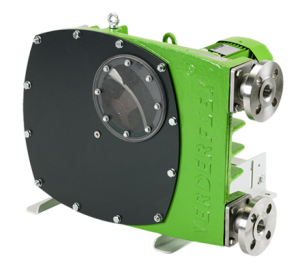 Pumps are critical components of the anaerobic digestion process, and it is critical to have equipment that performs at its peak performance. As you are no doubt aware, costs can add up quickly over the course of a year, with parts and pumps frequently needing to be replaced due to the nature of the digestate and the amount of time it is exposed to.
Pumps are critical components of the anaerobic digestion process, and it is critical to have equipment that performs at its peak performance. As you are no doubt aware, costs can add up quickly over the course of a year, with parts and pumps frequently needing to be replaced due to the nature of the digestate and the amount of time it is exposed to.
Biogas is generated primarily by removing air from a substance and allowing digestion to occur over a one to two-month period.
Moreover, well-run plants use many microorganisms. The Verderflex hose pump is a very good pump that is suitable for anaerobic digestion.
Frequently Asked Questions (FAQs)
Why is proper maintenance of anaerobic digestion pumps so important?
Proper maintenance of anaerobic digestion pumps is crucial for ensuring the entire system operates correctly and efficiently. If a pump fails, especially without a functional backup, the biogas production of the entire plant can be jeopardized.
What should I do if my anaerobic digestion pump starts making strange noises or the system pressure drops?
It's recommended to take a pressure reading of your system. Compare this reading to the baseline pressure recorded during the system's initial setup. A low pressure reading might indicate a problem with the pump or the system, while a high reading could suggest a blockage in the pipes.
Why is it important to record the system's pressure when it is first set up and working?
Recording the normal operating pressure at commissioning provides a crucial baseline for future troubleshooting. Without this initial reading, it's difficult to determine if current pressure readings are abnormally high or low, hindering effective problem diagnosis.
What should I consider regarding the warranty when choosing an anaerobic digestion pump?
Consider pumps with easy warranty processes, such as online registration or toll-free numbers. This can save you significant time and effort if any issues arise with the pump in the future.
What are the key aspects of construction quality to look for in an anaerobic digestion pump?
The three main aspects are materials, design, and manufacturing. Metal pumps are generally preferred for their strength and durability in most biogas plant applications. The pump's design should meet the specific requirements of your digester, and it should be manufactured in a quality-controlled environment to ensure adherence to standards.
Why is it recommended to only buy professional-grade anaerobic digestion pumps?
Professional-grade pumps are typically more reliable and have a longer lifespan compared to lower-cost alternatives often found on general retail websites. Investing in a professional-grade pump from a recognized manufacturer is generally worth the higher initial cost in the long run.
Should I prioritize the initial purchase price or the long-term cost when buying an anaerobic digestion pump?
It's advisable to base purchasing decisions on the total cost of ownership over the pump's lifetime. Investing in a higher-quality, more durable pump might have a higher initial cost but can lead to lower maintenance, replacement, and operational costs in the long run, making it a more cost-effective choice.
Why is it important to know how to manually turn on my anaerobic digestion pump?
Knowing how to manually start your pump is essential in case of a power outage. This can help prevent the loss of pressure and ensure continued operation of your system when automated systems are unavailable.
[Article first published 13 November 2014. Updated 20 January 2023 and FAQs Section added 13 May 2025.]



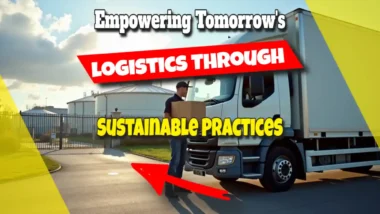


Thank you. Plenty of advice. The chopping action of the knife is good to prevent blockage from unexpected things which get into the mixture.
Can you pump chicken offal with these pumps. Maybe you could write about that?
Wow, thanks for pointing out the painfully obvious. I’d never have guessed that recording normal pressure might be important—next you’ll tell me water is wet!